Constraints Matrix
Related to the grid above, let’s say there is a lack of capital, or money, for your innovation. The lack of capital is the resource constraint
. If you have an intended innovation that requires money, yet you have none, you need not
stop. It is the presence of the money constraint that will add more creativity and problem-solving to the innovation process and phases. You will determine how to solve the problem without additional capital. Buying something would have been the easy fix; your fix will be outside the norm.
Motivation and Innovation
According to researchers in the field of motivation, Richard Ryan
and Edward Deci
, motivation
means to be moved by something – either intrinsically (internally), or extrinsically (external). If you have no inspiration to act, you will be characterized as unmotivated. Being unmotivated has negative societal consequences and hurts innovation.
Intrinsic and Extrinsic Motivation Examples
Money
is an external motivation. Initially, you might disagree with this statement. Some may say they only care about money, and can only think about making mountains of it, thus, it must be an intrinsic motivation. Unless you enjoy holding money, and not spending it, money is extrinsic. It is the things that you can do with money that is intrinsic, and that is what needs to be identified.
Here is an example of the difference between external and internal motivation. Your high school teacher may have informed your parents you were unmotivated in her class, and therefore, characterized you as a low preforming student. In high school, classes are specific. One class is about math, one is about English, and so forth. Thus, a creative writer might struggle in math. Furthermore, your grades might be the only evidence your teacher uses to judge your motivation. But, if you were to think back on that situation, it was not that you are a low preforming individual, but that you had lower intrinsic motivation toward math than English.
You may be curious of the classmates that were also creative writers and complained endlessly about their lack of interest in math, but earned considerably higher grades in math than you. Your teacher may even point to this fact to solidify that you are a low-performing individual compared to your peers. However, the difference could be motivation. The student that hated math as much as you, and openly complained that math would never help her in her career as a writer, might have relied on an extrinsic motivation that pushed her to focus on math.
Is there a particular college she wants to get in, and a low math grade would hinder that acceptance? Is there a reward system in place at home by her parents which grants more leisure time? Or is there another external motivator that promotes good math grades when otherwise math is of no interest to the student?
Let’s review the factors in this case. Your classmate lacks intrinsic motivation for math. Intrinsic motivation
, means to act upon something because it is inherently interesting or enjoyable to you. Consider the options for external motivation in your friend’s life. Extrinsic motivation
, refers to doing something because it leads to a distinguishable outcome. Consider asking people about their hidden or unexpected motivators to better understand human behavior. The more you know about motivation, the more you can prepare an innovation that people will use.
Consider what motivates you – intrinsically and extrinsically. In the boxes below, list a few things in each.
Motivation Exercise

Your Intrinsic Motivators
Your Extrinsic Motivators
Intrinsic motivation is the core of innovation.
Sleep and Innovation
Ironically, sleep
is one of the most powerful tools in the field of innovation. Sleep is a naturally recurring state of mind and body. Changes to the mind and body during sleep to support innovation are an altered consciousness, uninhibited sensory activity, and reduced interactions with surroundings. Our brains do not shut off while sleeping, on the contrary, many researchers believe the brain is more active in the ability to solve problems while the body rests. This makes sense in the fact that the brain must keep functioning to maintain life, but is able to divert processing from daily survival to subconscious issues. When awake, we are bombarded with excessive stimuli. Research overwhelmingly supports the continuous processing of relevant and seemingly unrelated events during sleep. In other words, we are free to make creative connections because we are relaxed, free of judgment, and not distracted by day-to-day life.
Our brains are, by their very nature, designed to solve problems. If we query our own brain before we go to sleep, it will start devising a strategy to solve that problem both consciously and unconsciously. Research on test-takers which study the night before a test, then obtain a good night’s sleep, continually reported higher test scores opposed to those that “pulled all-nighters.” Also, research supports the benefits of sleep on physical health. A study conducted on runners showed there was an identified decrease in performance after just one night of sleep deprivation.
Give this sleep exercise a try:
Before you go to sleep, focus lightly on a problem. Do not try to solve the problem before you go to sleep. Do not think too far in-depth about the problem to make yourself anxious. If you feel there is benefit in jotting some notes down before you go to sleep, do so.
This exercise is not to add more work to your day. This exercise is designed to decrease the imbalance of problem-solving. Review your problem immediately when you awake. What happened? If you insist nothing happened, think about the problem later in the day or keep trying the sleep strategy for a few days in a row. The results of others have proved very successful.
Sleep exercise
Jot down your experience with your sleep exercise in these boxes:
Innovation Resources
Resources
are the people, places, and things you have access to. Everyone has resources. Resources are distributed based on who we are. Some resources can be controlled, and some cannot.
What some people struggle with is identifying their resources. Money tends to be the focus of many. Many resources have a monetary value, but many valuable resources are free.
Here are a few free resources:
Friends and family
: family and friends bring a host of resources, from knowledge to skills. As an example, a student wanted to develop an app to connect students with campus events. He had no idea how to make an app. He was talking to a friend one evening, and come to find out, the friend made apps all the time!
Age:
Being in a certain age group gives added knowledge and access to that age group.
Geographical location:
Where, and to some extent, how you live is a resource. Even the most remote location offers resources that heavily populated places will not have access to.
Skills:
Can you think critically, strategize, organize? Your knowledge and ability within skill sets is a resource. Even when you do not have paints and canvas, you still have the skills required to paint. How else might those skills be applied?
Most people don’t realize that their most needed resources are knowledge and a strategy. What kind of resources do you have access to?
Resource exercise
List an Inventory of your resources:
Innovation Terms
The following is a list of additional terms you will use in this textbook.
Communication
– is a necessary information gathering tool for innovation. As noted in the definition of innovation, an innovation must help yourself and others. Without regularly communicating with the “others,” there is no way you can meet their needs or receive feedback on trial runs of your innovation.
Additionally, communication with seemingly unrelated actors in your environment leads to robust innovation development. Communication experts say the biggest barrier in meaningful communication is that the individual spends more time preparing for what they want to say, without listening closely enough to the other person. This naturally causes a disconnect from presentation to response. If innovation communication intends to produce a final outcome, that helps yourself and others, listening and responding based on others will get you there more efficiently.
Collaboration –
collaboration consists of input to the innovation between the innovator and the end-user. Collaboration can also mean working with a like-minded innovator. As an example, two students were concerned with dorm living health – one was concerned with food; one was concerned with exercise. By working together, they could build on important aspects that were of use to two innovations.
Confluence Model of
Creativity
[Office1]
[Office2]
– a model of insight paired with knowledge. Insights derive from the senses, the way one thinks, one’s personality, and environmental factors. Basically, it is all the small factors that come together at once to make a new connection.
Copy and tweak
– means taking an existing product or service and changing it to make it your own. Innovation is the outcome of a change and most of the time an innovation is not a brand-new invention. Also realize that when you come up with what you think is a “brand new invention,” the “brand new invention” is built with your previous knowledge of existing products and services. To fast-track innovation, consider copying an idea and tweaking it to make it your own to produce a completely new use for an existing product or service.
Convergent thinking
- the ability to give the "correct" answer to standardized questions. The process does not require creativity and is appropriate thinking for procedural tasks. An example of convergent thinking is solving a crossword puzzle or multiple-choice testing.
Creative Code –
a creative code is a unique set of activities that set your strategy of regularly engaging in innovation development. When you need to create something new, or even just solve a problem, a creative code is your way of working through the process.
Since none of us go about this process in the same way, sometimes a creative code is hard to identify or point out. When we begin engaging our creative code, none of us know exactly the various steps in our process as it is naturally occurring in us – don’t fight it. We call this a code because we have to crack it for ourselves through trial and error. We all have a supply of creativity and we can implement that creativity if we discover how. Our unique code cannot be replicated by another individual.
Divergent thinking
– a thought process or method used to generate creative ideas by exploring many possible solutions. An example of divergent thinking is innovation since there is no predetermined correct answer.
Feedback
– feedback for innovation should be designed for continuous improvement. In other words, receiving advice that is substantive in nature is more useful. Gathering feedback can be direct or indirect. Direct feedback
is a process in which the innovator solicits input on the innovation, like a survey. Indirect feedback
is received by observation of your surroundings and making connections to your innovation.
Ideation
– is the middle part of innovation. Ideation means thinking of as many possible solutions to the problem as possible – Brainstorming!
The ideation part of innovation is understood through the “left and right brain” theory.
Although the brain consists of two hemispheres, scientist do not truly believe the brain works in two independent sections. The “left brain, right brain theory” means there are two types of thinking.
Left-brain activity
is considered organized and logical, and the functions include:
-
logic
-
sequencing
-
linear thinking
-
mathematics
-
facts
-
thinking in words
Right-brain activity
is more visual and intuitive. It has a more creative and less organized way of thinking.
-
imagination
-
holistic thinking
-
intuition
-
arts
-
rhythm
-
nonverbal cues
-
feelings visualization
-
daydreaming
Once a problem has been identified as worthwhile, the left-brain theory needs to engage in the work of coming up with a multitude of solutions which need to be written down. The left-brain part of innovation is logical and sequential. Once an extensive list has been complied, it is time to engage the right-brain process. The right-brain process will include several distinctions that come from intuition.
Identification
of a problem
– problem identification is where the entire process of innovation starts. The problem you identify must be meaningful to you and affect other people. As a rational person with limited amounts of time, you should abandon problems that are not supported by your intrinsic motivation. Since innovation is a difficult process that takes time, you should only engage in problems that are worthwhile to you. Identifying the right problem is a problem in and of itself, but is an essential step. Any problem identified is the beginning of worthwhile work. If your motivation for the innovation is based on intrinsic motivation, the innovation process will retain value well beyond college.
Implementation
– implementation is the most critical aspect of innovation. Implementation is the difference between an idea and an innovation. There is a saying in innovation that goes like this…if you know what to do and you know how to do it, go ahead and do it.
Give it a try and find out how other people use your innovation in expected and unexpected ways.
If you know what the problem is and have ideated the solution, you must put it into play to be an innovation, otherwise, it is just an idea. Another way to process the difference between an idea and an innovation is that an innovation is the outcome that can be critiqued by your users.
Innovation
– innovation is a higher form of problem-solving. Innovation is systematic and replicable so it is a unique solution for more than one person. An innovation is a product, service, or social cause that brings about change for multiple persons. Innovation is not necessarily the same as invention.
Left-brain, right brain theory
- the “left brain, right brain theory” means there are two types of thinking. Left brain is logical; right brain is creative. (More on left brain, right brain theory can be found under ideation.)
Looping
– looping, in innovation, is not failure. Looping is completely contrary to failure. Looping back and starting over at a previous data point is highly progressive. If your innovation goes off course, or worse, crashes, you need to loop back around to the point before you got off track. When you return to that point, then you are miles ahead of where you were the first time because you have eliminated one or more possible solutions. You are closer to developing the right solution.
Open-ended questions –
an open-ended question is an avenue for an innovator to gather feedback during the innovation process. Yes
-or-no
questions give little to go on for the process of development. An open-ended question requires the answer to give meaningful feedback. An open-ended question does not always need to come from the innovator. The end-user should ask the innovator open-ended questions to help the process.
Painfully obvious
- every question you know the answer to is easy; and every question you don’t know the answer to is hard. There are many things that look complicated and hard to understand until you understand them. Sound obvious doesn’t it? However, when you try and try to figure something out, it is painfully obvious when the answer is revealed. The notion of something being painfully obvious becomes a running joke in the field of innovation. Paper that sticks on the wall without needing tape? Genius/obvious.
Philosophers and innovation
– early philosophers eluded to the concepts of innovation and the human condition. Aristotle
believed we should “think about thinking.” Thomas Aquinas
, a Dominican priest and Scriptural theologian, referred to a part of the gospels that is useful in understanding how we operate as informed actors. The gospels refer to “loving God with all your heart, all your will, all your soul, all your mind, and all your strength.” Aquinas believed our soul is at the top of this list. He went on to say the mind is the actor of the soul; the mind can determine where to put the will. This is also known as the heart of action. Our mind’s choice puts the will to work to get what the mind desires. Our intentionality can determine what we become.
Pivot
– pivoting is one of the most useful tools in your innovation toolbox. Pivoting in innovation means to change course. Changing the innovation process after research, information, or knowledge can make the original innovation undesirable to pursue. The change in course can be a complete scrap of your original innovation, or a drastic change to your existing innovation. Pivoting is a hyper-tweak.
Having the knowledge that a pivot is a natural process of innovation allows you to get away from the false notion that you need to be right the first time. You may be tempted to stay the course with a struggling innovation because the amount of time you have invested will be wasted. However, this notion is false. The more you try to shove a square peg into a round hole is time that is completely wasted. The more pushing and shoving to prove you are right – even though you are not – is just plain stubbornness, and a negative influence upon the magic of innovation.
Problem-solving –
is not innovation. Problem-solving solves a problem for the individual who has the problem, whereas innovation solves a problem for the individual and others. If you find that the solved problem only helps you, you are not innovating. However, problem-solving assists in developing strategies, like solving puzzles, that are tests of the mind. Problem-solving is a useful practice for building the skills for innovation.
Product market fit
– product market fit means to find a product that satisfies the need of a market. A product market fit, while certainly seen as a business term, is much more than that. Another way to look at product market fit is to think of a product
as your solution, a market as your user that has the problem, and the fit is the innovation.
Race to the bottom
is one of the issues early innovators are tempted by. The race to the bottom is the temptation to take the easy way out. This race is won by the student that announces early on that he/she has no ability to understand the material. This race to the bottom is inspired by simple thinking. In this race, the simpler the better. Innovation, and the related skills required, do not support the easy way out.
Let’s say you had to convince your professor that you simply cannot understand the concepts. The race to the bottom is won by not trying or caring. You simply must care to even
begin to think about the innovation process. Having no passion will win the race to the bottom. Don’t be that person. Professors know you are not; most of your classmates know you are not (the ones that are not easily fooled). Therefore, you are only fooling yourself.
Social innovation –
there is really not much difference between social innovation and innovation except the direct intent. When your direct intent is intentionally pointed at a social cause, this is often referred to as social innovation. A social innovation, is a new, or a bit different approach to a problem which enhances a social group’s cause.
As an example, a student was sick of the college food. Her parents regularly sent her care-packages with food. However, this college student could only handle so many boxes of macaroni and cheese. Her floor-mate received a care-package from her parents, too. In her pack were endless cans of tomato soup. The student with the mac and cheese implemented an innovation that helped her and her dorm. It was a give-one-get-one dorm food bank. If the students partnered with the local food bank to serve the hungry in their community, they would have moved from solving a problem of not enough food variety to a social innovation that got college students involved in the mission of the local food bank.
Scale –
is the process of growth. When working with your innovation, it is often useful to start over to better understand what you are working on. Once you start having some success, then you are ready for growth. Scaling includes the steps involved when implementing your innovation for a larger audience.
Statements –
stating a thought usually lacks discernable value to the innovator. A statement is just information without clarity.
An example of a statement that lacks value – “I don’t like it.” The only way a statement like this will continue is if the innovator follows up the statement with an open-ended question. What is it that you do not like? If the innovator was unskilled at open-ended questions, he/she could think
the entire innovation is unlikable, as opposed to something else. Maybe the end-user just didn’t like the color.
Thinking deliberately
– thinking deliberately is thinking in a specific way, and requires someone to pay deliberate attention to thoughts and unrelated events. Thinking deliberately is a dedicated time of thinking about the problem.
Thinking differently -
thinking differently is telling someone to do something without instructions: “to tell someone to think differently is as helpful to would-be innovators as ‘swing differently’ is to golfers.”
Tweak –
to tweak an innovation is slightly different than copy and tweak. A tweak is a slight change in your process of innovation. It is a smaller change than a pivot.
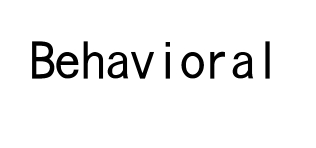
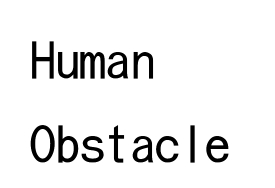
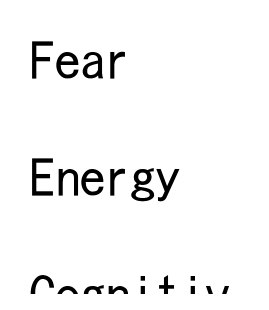
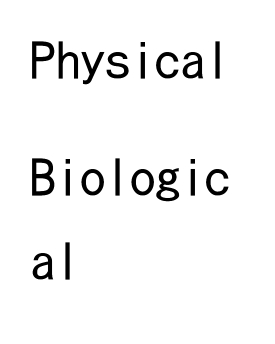
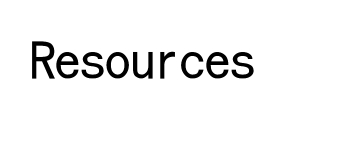
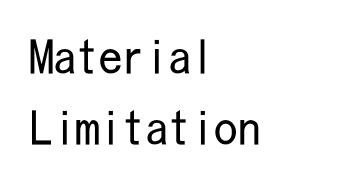

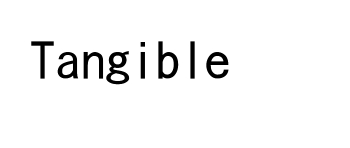








 Your Intrinsic Motivators
Your Extrinsic Motivators
Your Intrinsic Motivators
Your Extrinsic Motivators







